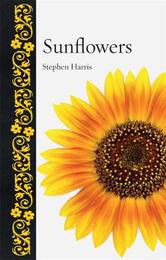
|
Sunflowers
Hardback
Main Details
Description
Sunflowers are the most recognizable members of the world's largest family of plants, Asteraceae, which includes lettuce, chrysanthemums, asters, dahlias and weeds. The sunflower family is found in almost all habitats, from the driest deserts through grasslands and the tallest mountains to urban wastelands, and includes more than 32,000 species. The family has become a part of our literary and visual cultures, inspiring artists such as Vincent van Gogh, and is used by advertisers to promote countless products. It produces hugely popular and economically valuable ornamental flowers, as well as familiar flavourings such as tarragon and artemisia, and sunflowers are also used in the production of antimalarial drugs, artificial sweeteners, insecticides and fish poisons. Sunflowers unravels the interplay between the biology of sunflowers and human cultures over the last 6,000 years. It explores our fascination with the family and how our uses of the plants have changed over millennia. Illustrated with many rarely seen images of the sunflower family, this beautiful volume will appeal to those looking for a new, surprising perspective on familiar flowers.
Author Biography
Stephen A. Harris has been Druce Curator of Oxford University Herbaria since 1995 and a University Research Lecturer since 2002. His books include The Magnificent Flora Graeca (2007), Grasses (Reaktion, 2014) and What Have Plants Ever Done for Us? (2015).
Reviews"[Harris] has a lovely writing style that blends an authoritative understanding of his subject matter with a charming and accessible sense of prose. . . . Anyone interested in plants, in general, or one of the most specious families of flowering plants, in particular, will find this volume to be both entertaining and informative. After reading this book, you will never look at a head of lettuce again with the same attitude as you once had."-- "Quarterly Review of Biology" "A fascinating exploration of biology, ecology, and cultural significance. Harris describes the importance of thistles for the Scots, edelweiss for Austrians, and chrysanthemums for the Japanese, often with amusing anecdotes. Open the book at any page and you will discover something fascinating."-- "Gardens Illustrated, Best Gardening Books of the Year" "After an extensive biological background of the Asteraceae, the author complements the biology with much fascinating historical and cultural information on this plant group . . . Part of Reaktion Books' ambitious Botanical series, which presents various plants from a natural and cultural history perspective, this fascinating and exhaustively researched volume is appropriate for college or advanced high school readers. It would be a valuable addition to a classroom library . . . Profusely illustrated with captivating photographs."-- "American Biology Teacher" "An entertaining, thoughtful, well-researched book based on Harris's extensive study of Asteraceae that can delight botanists, gardeners, and history buffs."-- "Economic Botany" "Asteraceae encompasses marigolds, chrysanthemums, daisies, lettuce, thistles, and dozens of other familiar plants. The book is a fascinating exploration of the family's biology, ecology, and cultural significance. . . . Open the book at any page and you will discover something new, and often surprising, about the sunflower family."-- "Garden Answers" "With approximately 32,000 species it's one of the biggest assemblages of flowering plants on the planet, and is therefore a family worthy of celebration. And celebrate that amazing family is what Harris does in this remarkable book. . . . A fine read, and an enjoyable one. . . . Sunflowers is certainly informative and educational."-- "Botany One"
|